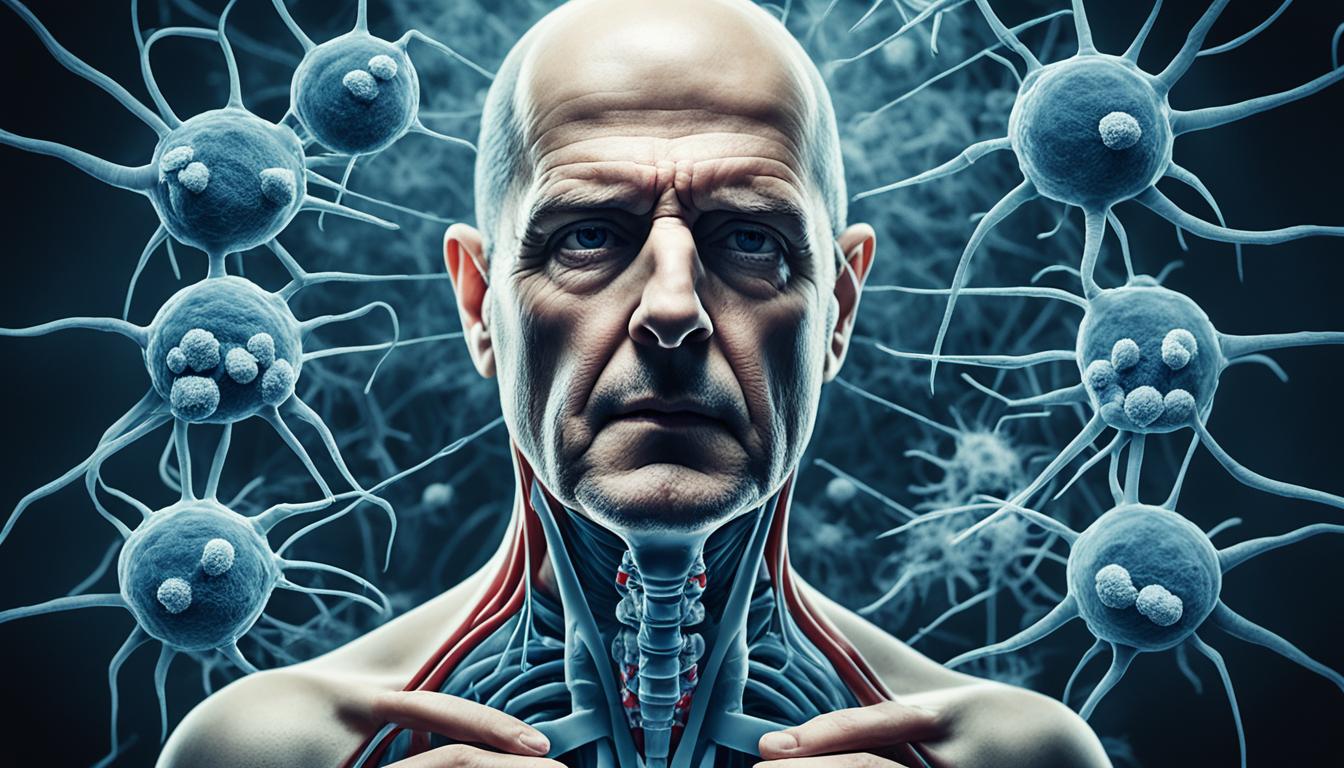Yersinia pestis is a bacterium that causes the plague. It’s a deadly infectious disease responsible for pandemics across history. This disease comes in different forms, with the bubonic plague being the most known.
The bubonic plague shows symptoms similar to the flu. It leads to painful, swollen lymph nodes. The bacterium spreads most commonly through the bite of infected fleas. These fleas are usually found on animals like rats. But, it can also spread through touching contaminated items or from an infected person’s breath. Quick detection and diagnosis are key for treating the plague effectively and lowering death rates.
Scientists are studying if stem cell therapy can help with the plague. Yet, more research on this potential treatment is necessary.
Key Takeaways:
- Yersinia pestis is the bacterium responsible for causing the plague.
- The plague can manifest in different forms, including the bubonic plague.
- Transmission occurs primarily through the bite of infected fleas.
- Early detection and diagnosis are crucial for effective treatment.
- Stem cell therapy shows promise as a potential treatment option, but further research is required.
Origins and Transmission of Yersinia Pestis
The bacteria that cause the bubonic plague, Yersinia pestis, comes from rodents and their fleas. It mostly lives in rats, making them the key source. Infected fleas on rats spread the bacteria to other animals and people. This starts when a flea bites an animal, like a rat, and takes in the bacteria.
After a flea gets the bacteria, it can spread it by biting more animals, including humans. The bacteria can also move to people if they touch items that an infected animal has touched. Or, it can spread by breathing in droplets from someone who’s sick. This disease has led to big outbreaks, like the Black Death in the 1300s, killing many.
Knowing where Yersinia pestis comes from and how it spreads is key to stopping it. We can fight it by controlling rodents and the fleas they carry. Public steps to manage these pests can break the chain of disease spread. Also, teaching people how to avoid contact with sick animals and keep their surroundings clean can help stop Yersinia pestis.
Symptoms, Diagnosis, and Treatment of Yersinia Pestis Infection
Yersinia pestis infection comes in various forms. This includes the bubonic plague, pneumonic plague, and other rare types. The bubonic plague is the most common. Symptoms include high fever, chills, and swollen lymph nodes called buboes, which are painful. These signs show up 2 to 6 days after being in contact with the bacteria (Yersinia pestis).
To diagnose Yersinia pestis infection, doctors look at your symptoms, do tests, and use imaging. They check your body, run blood tests, and possibly use X-rays. Finding the infection early helps start the right treatment and stops it from spreading.
Yersinia pestis is treated with antibiotics as soon as possible. Medicines like streptomycin, doxycycline, and gentamicin fight the bacteria. They help lessen symptoms and avoid further illness. If the infection is severe, someone might need to stay in the hospital. This is to get additional care for issues like trouble breathing or organ failure.
Common Symptoms of Yersinia Pestis Infection
| Form of Infection | Symptoms |
|---|---|
| Bubonic Plague | Fever, chills, headache, muscle pain, swollen and painful lymph nodes (buboes) |
| Pneumonic Plague | Fever, cough, chest pain, shortness of breath |
| Septicemic Plague | Fever, chills, abdominal pain, diarrhea, bleeding |
Besides antibiotics, patients might get IV fluids and pain relief. These help the person feel better and recover. Quick diagnosis and treatment are key to lowering the death rate. If someone might have been near the infection, they should see a doctor right away. Doctors in high-risk areas should be alert during outbreaks.
The Role of Stem Cell Therapy in Combatting Yersinia Pestis
Stem cell therapy could be a key player in taking on Yersinia pestis. Stem cells can renew damaged areas. This makes them a hopeful way to battle the harsh effects of the sickness. They also boost the body’s defense, helping fight off Yersinia pestis.
Still, we need more studies to check on how good and safe stem cell therapy really is. Scientists are working hard to find the best stem cell types and ways to give them. This will make the treatment work better against Yersinia pestis.
Using stem cells to help fight Yersinia pestis is a new idea. But, it needs more tests. As we learn more, we might find even better ways to use stem cells. They might become a key part in treating this sickness.

